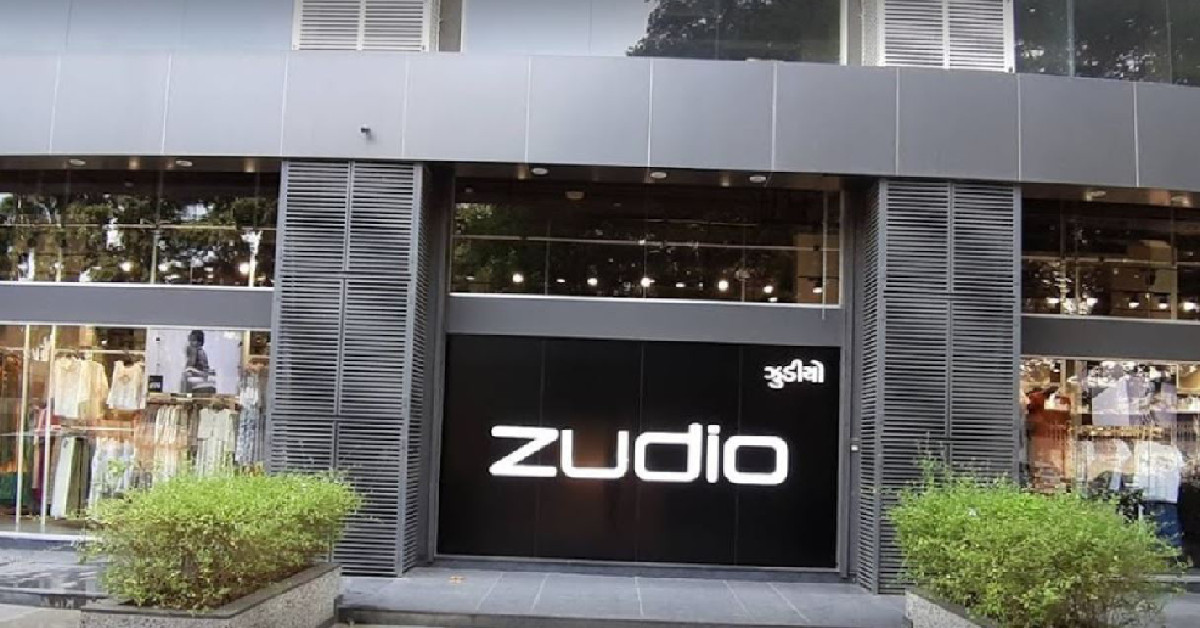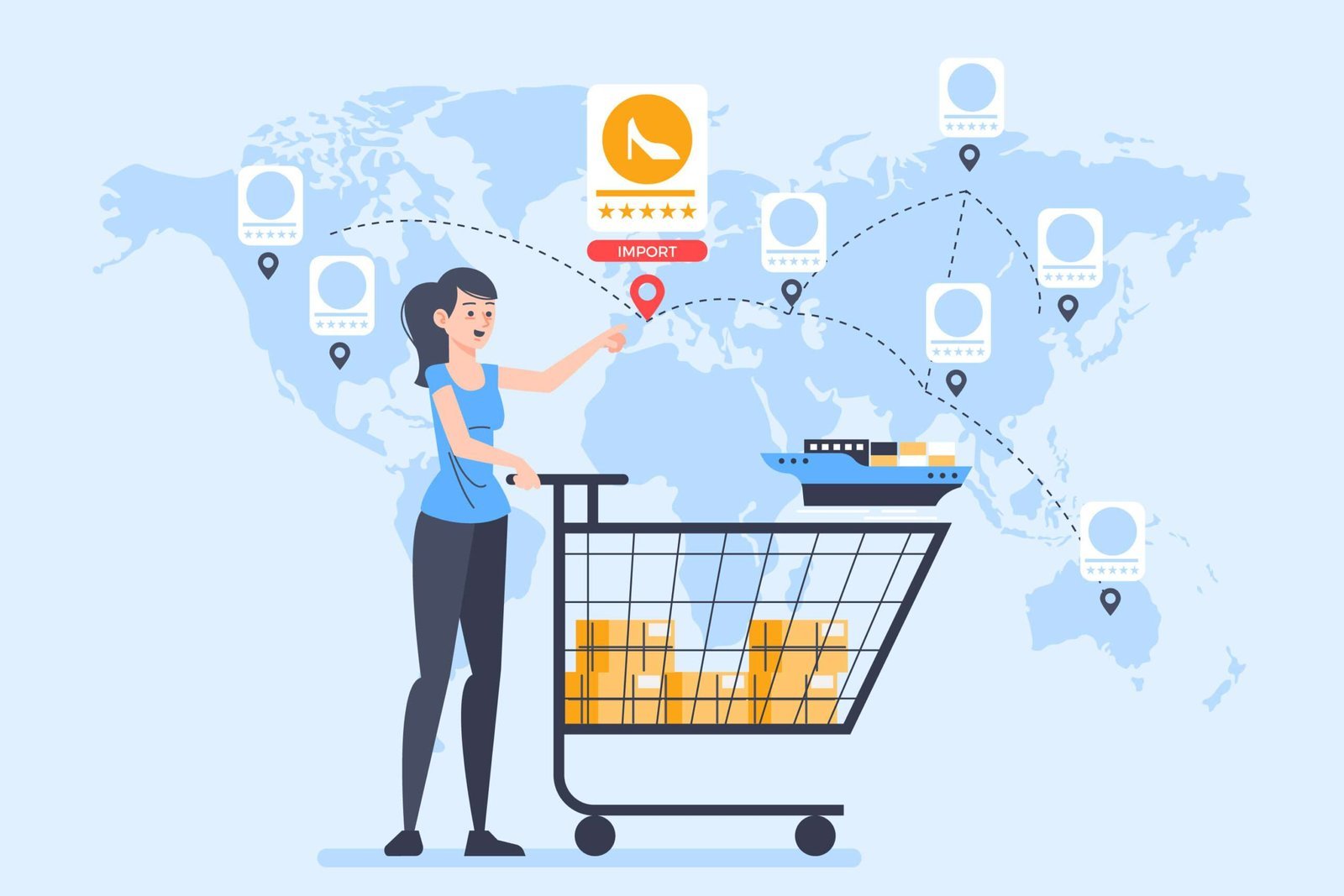As we venture further into the digital age, e-commerce continues to be a transformative force reshaping how we shop, interact with brands, and conduct business. The rapid evolution of technology and consumer behaviors means that staying ahead of trends is crucial for businesses aiming to thrive in this competitive landscape. Bucks Venture delves into the future of e-commerce, exploring the key trends set to define the next decade.

1. Rise of Artificial Intelligence and Machine Learning
Artificial Intelligence (AI) and Machine Learning (ML) are no longer just buzzwords in the tech industry; they are pivotal in revolutionizing e-commerce. These technologies are enhancing the shopping experience by enabling personalized recommendations, chatbots, and advanced search functionalities.
Personalization: AI algorithms analyze customer data to offer personalized shopping experiences. From product recommendations based on browsing history to dynamic pricing strategies that adjust in real-time, AI is making e-commerce more tailored and customer-centric.
Chatbots and Virtual Assistants: AI-powered chatbots are improving customer service by providing instant responses to queries, guiding users through the purchase process, and even handling returns and refunds. Virtual assistants like Amazon’s Alexa and Google Assistant are also integrating shopping functionalities, making voice-activated purchases a growing trend.
Predictive Analytics: ML models are used to forecast demand, optimize inventory, and streamline supply chain operations. Predictive analytics can help retailers anticipate trends, manage stock levels, and reduce costs associated with overstocking or stockouts.

2. Augmented Reality and Virtual Reality
Augmented Reality (AR) and Virtual Reality (VR) are set to revolutionize the e-commerce landscape by providing immersive shopping experiences. These technologies bridge the gap between physical and online shopping, offering customers a new way to interact with products.
Virtual Try-Ons: AR enables customers to virtually try on clothes, accessories, or even makeup, enhancing the online shopping experience. This reduces the uncertainty associated with online purchases and can significantly lower return rates.
Virtual Showrooms: VR allows customers to explore virtual showrooms, giving them a feel of the physical store from the comfort of their homes. This is particularly beneficial for high-ticket items like furniture, where seeing the product in a real-life context is crucial.
Enhanced Product Visualization: AR and VR technologies enable detailed visualization of products. Customers can view products from multiple angles, zoom in on intricate details, and even see how an item would look in their own space.

3. Voice Commerce
Voice commerce is rapidly gaining traction, driven by the widespread adoption of smart speakers and voice assistants. This trend is set to change how consumers search for and purchase products online.
Convenience: Voice commerce offers unparalleled convenience. Shoppers can make purchases, track orders, and receive personalized recommendations using simple voice commands.
Voice Search Optimization: As voice search becomes more prevalent, e-commerce businesses need to optimize their content for voice search queries. This includes focusing on natural language processing (NLP) and long-tail keywords to ensure their products are easily discoverable.
Integration with IoT Devices: The integration of voice commerce with Internet of Things (IoT) devices opens up new possibilities. For example, smart refrigerators can automatically reorder groceries when supplies run low, providing a seamless shopping experience.

4. Mobile Commerce and Progressive Web Apps
Mobile commerce (m-commerce) continues to grow, driven by the increasing use of smartphones and mobile internet. Progressive Web Apps (PWAs) are enhancing the mobile shopping experience by combining the best features of websites and native apps.
Seamless Experience: PWAs offer a seamless user experience with fast loading times, offline capabilities, and push notifications. They provide a native app-like experience without the need for users to download an app, making them highly accessible.
Mobile Payment Solutions: The proliferation of mobile payment solutions like Apple Pay, Google Wallet, and various digital wallets is simplifying the checkout process. These solutions offer secure, one-click payment options, reducing cart abandonment rates.
Personalized Shopping: Mobile devices enable location-based services, allowing retailers to offer personalized deals and recommendations based on the user’s location. Geo-targeted marketing strategies are becoming increasingly effective in driving sales.

5. Social Commerce
Social media platforms are becoming significant players in the e-commerce space, blurring the lines between social interaction and shopping. Social commerce leverages the power of social networks to drive sales and enhance customer engagement.
Shoppable Posts: Platforms like Instagram, Facebook, and Pinterest are introducing shoppable posts, allowing users to purchase products directly from their feeds. This seamless integration of social media and e-commerce is reducing friction in the buying process.
Influencer Marketing: Influencer marketing continues to grow, with influencers acting as trusted advisors for their followers. Brands are partnering with influencers to promote products, leveraging their reach and authenticity to drive sales.
Social Proof and Reviews: Social media platforms provide a space for customers to share their experiences and reviews. Positive social proof can significantly influence purchase decisions, making user-generated content a powerful tool for e-commerce businesses.

6. Sustainability and Ethical Shopping
Consumers are becoming more conscious of the environmental and ethical impact of their purchases. This shift towards sustainability is influencing e-commerce trends, with businesses adopting eco-friendly practices and transparent supply chains.
Eco-Friendly Products: There is a growing demand for eco-friendly products made from sustainable materials. E-commerce businesses are responding by offering a wider range of green products and highlighting their sustainability credentials.
Sustainable Packaging: Reducing plastic waste and using recyclable materials for packaging are becoming standard practices. Brands are also adopting minimalistic packaging to reduce their environmental footprint.
Transparent Supply Chains: Consumers are demanding transparency in supply chains. Businesses are providing more information about the sourcing of materials, labor practices, and the overall impact of their products, building trust with environmentally conscious consumers.

7. Subscription-Based Models
Subscription-based models are gaining popularity, offering convenience and personalized experiences. These models are particularly effective in industries like fashion, beauty, and food.
Curated Boxes: Subscription boxes that offer curated selections of products based on customer preferences are becoming a hit. These boxes provide a sense of discovery and personalization, enhancing customer loyalty.
Replenishment Services: Subscription services that automatically replenish essential items like groceries, toiletries, or pet supplies are growing. These services save time and ensure that customers never run out of necessary products.
Exclusive Access and Discounts: Subscription models often come with exclusive perks such as early access to new products, special discounts, and members-only events, adding value for customers and encouraging long-term loyalty.

8. Blockchain Technology
Blockchain technology is poised to transform e-commerce by enhancing security, transparency, and efficiency. Its decentralized nature offers several benefits for both businesses and consumers.
Secure Transactions: Blockchain provides a secure and transparent way to conduct transactions. It reduces the risk of fraud and enhances the security of payment processing, which is crucial for building customer trust.
Transparent Supply Chains: Blockchain can be used to create transparent supply chains, allowing consumers to trace the origin and journey of products. This transparency is particularly valuable for verifying the authenticity of goods and ensuring ethical sourcing.
Smart Contracts: Smart contracts on the blockchain can automate various processes, from payments to inventory management. These self-executing contracts reduce the need for intermediaries, lowering costs and increasing efficiency.

9. Omnichannel Retailing
Omnichannel retailing is about providing a seamless shopping experience across multiple channels, both online and offline. This approach recognizes that today’s consumers use various touchpoints in their shopping journey.
Integrated Shopping Experiences: Retailers are integrating their online and offline channels to provide a cohesive experience. For example, customers can browse products online, check in-store availability, and choose to pick up their orders from a nearby store.
Unified Customer Data: By consolidating customer data from various channels, businesses can gain a holistic view of their customers’ preferences and behaviors. This data-driven approach allows for more personalized marketing and better customer service.
Consistent Branding: Maintaining consistent branding and messaging across all channels is crucial for building a strong brand identity. Omnichannel strategies ensure that customers have a uniform experience, whether they are shopping online, on a mobile app, or in a physical store.

10. Drones and Autonomous Delivery
The future of e-commerce logistics is being shaped by advancements in drone technology and autonomous vehicles. These innovations promise faster, more efficient delivery services.
Drone Deliveries: Companies like Amazon and UPS are already experimenting with drone deliveries. Drones can reach remote areas quickly, reducing delivery times and costs. As regulations evolve, we can expect to see wider adoption of drone delivery services.
Autonomous Vehicles: Autonomous delivery vehicles are being developed to handle last-mile deliveries. These vehicles can operate 24/7, reducing labor costs and improving delivery efficiency. Self-driving trucks are also being tested for long-haul freight transportation.
Sustainability: Autonomous delivery solutions are often more environmentally friendly than traditional delivery methods. Electric drones and vehicles produce fewer emissions, contributing to greener logistics.

11. Hyper-Personalization
Hyper-personalization takes traditional personalization to the next level by leveraging advanced data analytics and AI. This trend focuses on creating highly tailored shopping experiences for individual customers.
Behavioral Data: Hyper-personalization relies on analyzing vast amounts of data, including browsing behavior, purchase history, and even social media activity. This data is used to predict customer preferences and deliver highly relevant content and product recommendations.
Dynamic Content: Websites and marketing materials are increasingly featuring dynamic content that changes based on the user’s profile. This includes personalized product listings, targeted promotions, and customized emails.
Enhanced Customer Engagement: Hyper-personalization fosters deeper customer engagement by making customers feel understood and valued. This can lead to higher conversion rates and stronger brand loyalty.

12. Cross-Border E-commerce
Globalization and advancements in logistics are making cross-border e-commerce more accessible. Businesses are reaching international markets, expanding their customer base, and increasing revenue potential.
Localized Experiences: To succeed in cross-border e-commerce, businesses need to offer localized experiences. This includes providing multi-language support, accepting various currencies, and understanding local regulations and cultural nuances.
Efficient Logistics: Reliable and cost-effective international shipping solutions are crucial for cross-border e-commerce. Partnering with global logistics providers and using technology to optimize supply chain operations can help businesses overcome logistical challenges.
Cross-Border Payment Solutions: Facilitating seamless international transactions requires robust payment solutions. Businesses need to offer multiple payment options, including international credit cards, digital wallets, and local payment methods.

13. Ethical AI and Data Privacy
As AI and data analytics become integral to e-commerce, ethical considerations and data privacy are paramount. Businesses must navigate these issues carefully to build trust and maintain compliance.
Transparency: Businesses should be transparent about how they collect, use, and protect customer data. Clear privacy policies and communication can help build trust with customers.
Consent and Control: Providing customers with control over their data is essential. This includes obtaining explicit consent for data collection and allowing customers to manage their data preferences.
Ethical AI: Ensuring that AI algorithms are fair and unbiased is crucial. Businesses must regularly audit their AI systems to identify and mitigate any biases, ensuring that all customers are treated equitably.

14. Gamification
Gamification is emerging as a powerful tool to enhance customer engagement and drive sales. By incorporating game-like elements into the shopping experience, businesses can make e-commerce more interactive and enjoyable.
Rewards and Incentives: Gamification strategies often involve rewarding customers for completing certain actions, such as making a purchase, writing a review, or sharing on social media. Points, badges, and leaderboards can motivate customers to engage more with the brand.
Interactive Experiences: Integrating interactive elements like quizzes, challenges, and virtual games can make the shopping experience more fun and engaging. These elements can also provide valuable insights into customer preferences.
Enhanced Loyalty Programs: Gamification can enhance loyalty programs by making them more dynamic and rewarding. Customers can earn points for various activities and redeem them for exclusive perks and discounts.

15. 5G Technology
The rollout of 5G technology is set to revolutionize e-commerce by providing faster and more reliable internet connectivity. This will enable new and enhanced shopping experiences.
Faster Loading Times: 5G will significantly reduce website loading times, providing a smoother and more efficient shopping experience. This can reduce bounce rates and increase conversion rates.
Enhanced Mobile Experiences: With 5G, mobile shopping experiences will be faster and more responsive. High-quality video content, AR applications, and real-time interactions will become more accessible on mobile devices.
IoT Integration: 5G will enhance the capabilities of IoT devices, enabling more seamless integration with e-commerce platforms. This includes smart home devices that can automatically reorder products and provide real-time inventory updates.
Conclusion
The future of e-commerce is brimming with possibilities, driven by technological advancements and evolving consumer behaviors. Businesses that stay ahead of these trends and embrace innovation will be well-positioned to thrive in this dynamic landscape. From AI and AR to sustainability and cross-border commerce, the e-commerce industry is poised for significant transformation. Bucks Venture is excited to be part of this journey, helping businesses navigate the future of e-commerce and achieve lasting success.








